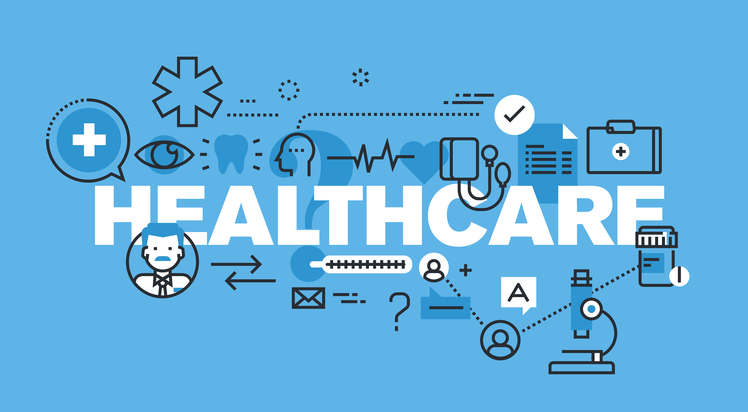
The need for biologic-based therapeutics that can be administered via the subcutaneous roue and emergence of supporting devices
Subcutaneous Biologics, Technologies and Drug Delivery Systems Market: Over the years, the incidence and prevalence of chronic diseases, such as diabetes, multiple sclerosis and rheumatoid arthritis, have increased significantly. Presently, the recommended treatment options for such clinical conditions are mostly biologics, which need to be administered via parenteral routes in order to ensure maximum therapeutic benefit.
Given the inherent requirement for frequent medication, patients suffering from such long-lasting clinical conditions generally end up spending high amounts on not only the prescribed therapeutic regimen, but also on numerous hospital visits for dose administration. It is also worth highlighting that many of the currently approved therapeutics which are administered by intravenous infusion are more time consuming and require costlier administration infrastructures. Therefore, subcutaneous administration has been developed as an alternative delivery method for some of these therapeutic proteins.
Get Detailed Report: https://www.rootsanalysis.com/reports/view_document/subcutaneous-biologics-delivery/314.html
After switching an intravenous drug to subcutaneous, the formulation must be capable of offering the same set of therapeutic benefits. The dose volume which can be delivered by subcutaneous route is much lower, as compared to the intravenous route. As a result, subcutaneous formulations are more viscous, featuring high concentrations of drug substance. Therefore, manufacturers must ensure that the protein is adequately absorbed from the site of administration of subcutaneous formulation.
Generally, reformulation of intravenous products requires some adjustments in its established production process for switching to subcutaneous route of administration. The following figure provides a schematic representation of manufacturing changes that are required to develop an established intravenous product into a subcutaneous product.
Due to various reasons, such as limited solubility of the active substance and high viscosity of resultant formulation, conventional prefilled syringes are incapable of successfully enabling the administration of higher concentration (doses above 200 mg – 300 mg per injection) drug products. Therefore, the only alternative for delivering high doses of therapeutic products is to increase the volume of the formulation. As a result, many pharmaceutical companies have undertaken initiatives to develop novel technologies to enable high volume dosing via the subcutaneous route. Moreover, on-body delivery systems, such as large volume wearable injectors, offer a technical solution for subcutaneous delivery of high-concentration biotherapeutics drugs, at volumes up to 50 mL.
Request for Customization: https://www.rootsanalysis.com/reports/314/request-customization.html
Considering the fact that these drug delivery technologies have the capability to overcome some of the disadvantages associated with conventional drug delivery systems and deliver a wide spectrum of therapeutic molecules (without compromising the treatment regimen in anyway), indicating potential to replace traditional delivery approaches.
Presently, there is a need within the pharmaceutical industry to offer customization and further enhance features of subcutaneous drug delivery devices, mostly for product differentiation purposes. This has led device developers to collaborate with digital health companies for integration of additional features and development of affiliated mobile applications. The primary goal behind this is to include patient-focused design elements with disease related information (dose calculation, history of uptake and others) to optimize therapeutic outcomes and improve medication adherence.
At present, 30+ players are engaged in the development / deployment of subcutaneous formulation technologies
Given the low bioavailability associated with oral administration, as well as the challenges related to intravenous dosing, there has been a rise in preference for subcutaneous injections to deliver drugs. It is worth mentioning that more than 120 subcutaneous biologics have been approved, till date; in addition, around 350 such therapeutics are currently under development. Further, a number of marketed / investigational products have been formulated with high concentrations of biologics (>100 mg/mL) in order to realize the multiple benefits associated with the subcutaneous formulation approach.
To cope up with the current and future market demand, subcutaneous formulation technologies developers are actively collaborating with various stakeholders across the Globe
During our research, we came across over 85 partnerships and collaborations that have been established by various stakeholders engaged in the development of subcutaneous formulation technologies, during the period pre-2016-2021 (till October).
Request for Sample: https://www.rootsanalysis.com/reports/314/request-sample.html
Read Our Latest Blogs:
Visit for More Insights: https://www.rootsanalysis.com/reports.html
Read Our Latest Press Release: https://www.rootsanalysis.com/press-releases.html
Latest Blogs On Healthcare Industry: https://www.rootsanalysis.com/blog/
Our Service Portfolio: Pipeline Tracking | Publication Analysis | Investment Analysis | Market Assessment | Competitive Profiling | Commercial Strategy and Business Development
About Roots Analysis
Roots Analysis is one of the fastest growing market research companies, sharing fresh and independent perspectives in the bio-pharmaceutical industry. The in-depth research, analysis and insights are driven by an experienced leadership team which has gained many years of significant experience in this sector.
Contact Information
Roots Analysis Private Limited
Ben Johnson
+1 (415) 800 3415
+44 (122) 391 1091
